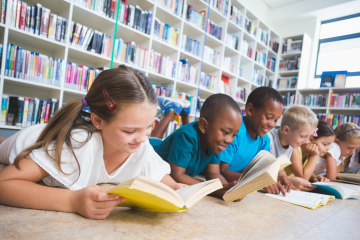In the world of parenting and child development, the strategy of positive reinforcement shines as a guiding light. It’s an approach that not only nurtures good behavior but also fosters a sense of confidence and self-worth in children. In this article, we’ll explore the magic of positive reinforcement for kids, understand the behaviors it reinforces, and set the criteria for effective positive reinforcement.
Understanding Positive Reinforcement
Positive reinforcement is a parenting style that involves acknowledging and rewarding good behavior, ultimately encouraging its repetition. It operates on the principle that children are more likely to continue behaviors for which they receive positive feedback or rewards.
Which Are Good Behaviors to Reinforce?
Politeness and Respect: Encouraging children to say “please” and “thank you” or be respectful to others is a fundamental aspect of positive reinforcement. When kids exhibit these behaviors, it’s important to acknowledge and praise them.
- Completing Tasks: Whether it’s finishing homework, cleaning up toys, or following a routine, reinforcing the completion of tasks teaches responsibility and time management.
- Sharing and Cooperation: In a world that values teamwork, teaching children to share and cooperate is a valuable lesson. Positive reinforcement for sharing and cooperating can help in social development.
- Empathy and Kindness: Acknowledging and praising empathetic and kind gestures, such as helping a friend or showing concern, reinforces the importance of these qualities.
- Honesty: When children tell the truth and admit their mistakes, reinforcing their honesty builds trust and integrity.
 What Are the Criteria for Positive Reinforcement?
What Are the Criteria for Positive Reinforcement?
Positive reinforcement is a powerful tool, but it’s essential to establish clear criteria to ensure its effectiveness.
- Specific Praise: Offer specific and immediate praise when your child demonstrates the desired behavior. For example, saying, “I’m proud of how you shared your toys with your friend” is more effective than vague praise.
- Consistency: Consistency is key. Reinforce good behavior every time you see it. This helps children understand that the behavior is consistently expected.
- Appropriate Rewards: Choose rewards that are appropriate for the behavior and the child’s age. Small rewards, like stickers or extra playtime, can work wonders.
- Timing: The timing of reinforcement is crucial. Reinforce the behavior as soon as it happens to establish a clear connection between the action and the reward.
- Avoid Material Rewards: While material rewards have their place, they should be used sparingly. The focus should be on verbal praise and non-material reinforcement to instill intrinsic motivation.
The Impact of Positive Reinforcement
Positive reinforcement is not just a simple technique for shaping children’s behavior; it’s a powerful tool that leaves a profound impact on their overall development. The practice of acknowledging and rewarding good behavior with praise and sometimes tangible rewards is more than just a parenting strategy; it’s a gateway to excellence in children.
Boosting Self-Esteem and Self-Worth
Positive reinforcement is like sunshine for a child’s self-esteem. When children consistently receive praise and rewards for their good behavior, they develop a sense of self-worth and confidence. They begin to believe in their abilities and feel proud of their accomplishments. This self-assurance is a valuable asset that stays with them as they navigate the complexities of life.
Motivation to Learn and Explore
Positive reinforcement creates a positive learning environment. Children who are frequently praised and rewarded for their efforts become motivated to learn and explore. They are more willing to take on challenges, try new things, and push their boundaries. It’s as if positive reinforcement equips them with the curiosity and drive to excel in various aspects of life.
Healthy Relationships and Social Skills
 The impact of positive reinforcement extends to social skills of kids. When they experience positive reinforcement at home and school, it often leads to healthier, more positive relationships with family, peers, and authority figures. They learn the value of politeness, cooperation, and kindness, which are essential for nurturing healthy social skills.
The impact of positive reinforcement extends to social skills of kids. When they experience positive reinforcement at home and school, it often leads to healthier, more positive relationships with family, peers, and authority figures. They learn the value of politeness, cooperation, and kindness, which are essential for nurturing healthy social skills.
Conflict Resolution and Emotional Intelligence
One of the remarkable effects of positive reinforcement is the development of emotional intelligence. Children who receive consistent praise and rewards for their good behavior tend to be more emotionally aware and skilled at handling conflicts. They learn how to express themselves effectively, resolve disputes, and maintain a positive outlook in challenging situations.
Character Building and Moral Values
Positive reinforcement goes beyond behavior modification; it shapes a child’s character. By reinforcing behaviors like honesty, integrity, empathy, and kindness, we’re not just encouraging actions but also instilling values. These values become an integral part of a child’s moral compass, guiding them to make ethical and responsible choices.
Confidence and Independence
Children who experience positive reinforcement grow up to be confident individuals. They’re not afraid to take initiative, express their opinions, and stand up for what they believe is right. This confidence empowers them to embrace independence and make decisions that align with their values and goals.
Resilience and Perseverance
The consistent praise and rewards offered through positive reinforcement instill a sense of resilience and perseverance in children. They learn that effort and good behavior are appreciated and rewarded, which encourages them to face challenges with determination. This resilience becomes a valuable asset as they tackle life’s ups and downs.
Intrinsic Motivation
Positive reinforcement gradually transitions from external rewards to intrinsic motivation. While external rewards like stickers and extra playtime are effective, the ultimate goal is to have children perform good behavior for the intrinsic satisfaction it brings. It’s about nurturing a love for being a good person and the joy that comes from making others happy.
Preparation for a Brighter Future
The impact of positive reinforcement echoes into the future. Children who have experienced the power of praise and rewards grow up with a strong foundation for success. They carry the attributes of self-confidence, integrity, and resilience into their adult lives, allowing them to navigate life’s challenges with grace and poise.
FAQs
- Can I use positive reinforcement for teenagers, or is it only for younger kids?
Positive reinforcement can be effective for children of all ages, including teenagers. The key is to tailor the approach and rewards to match their developmental stage and interests.
- Are material rewards like toys or candies effective forms of positive reinforcement?
While material rewards can be effective, it’s important to use them in moderation. Non-material rewards, such as praise and extra playtime, are often more sustainable and help build intrinsic motivation.
- What do I do if my child’s behavior isn’t improving despite positive reinforcement?
If positive reinforcement isn’t producing the desired results, consider seeking guidance from a child psychologist or counselor who can provide specialized strategies and advice. Check out understanding the importance of socialization in early childhood.
- Is there such a thing as overusing positive reinforcement?
While positive reinforcement is a valuable tool, overusing it can lead to an expectation of constant rewards. It’s important to strike a balance and gradually reduce the need for external rewards as children develop intrinsic motivation.
- Are time-outs or punishment effective alternatives to positive reinforcement?
Time-outs and punishment have their place in discipline, but they are typically less effective in teaching and reinforcing positive behavior. Positive reinforcement focuses on encouraging good behavior and building a child’s self-esteem.
Conclusion
Positive reinforcement is a transformative parenting approach that empowers children to grow and develop in a positive and nurturing environment. It’s about celebrating the small victories and acknowledging the efforts children make to exhibit good behavior. By reinforcing politeness, cooperation, honesty, and kindness, we’re not just shaping their behavior but also their character. Positive reinforcement sets the stage for a brighter future, one in which our children are well-equipped to face life’s challenges with confidence and integrity.





0 Comments